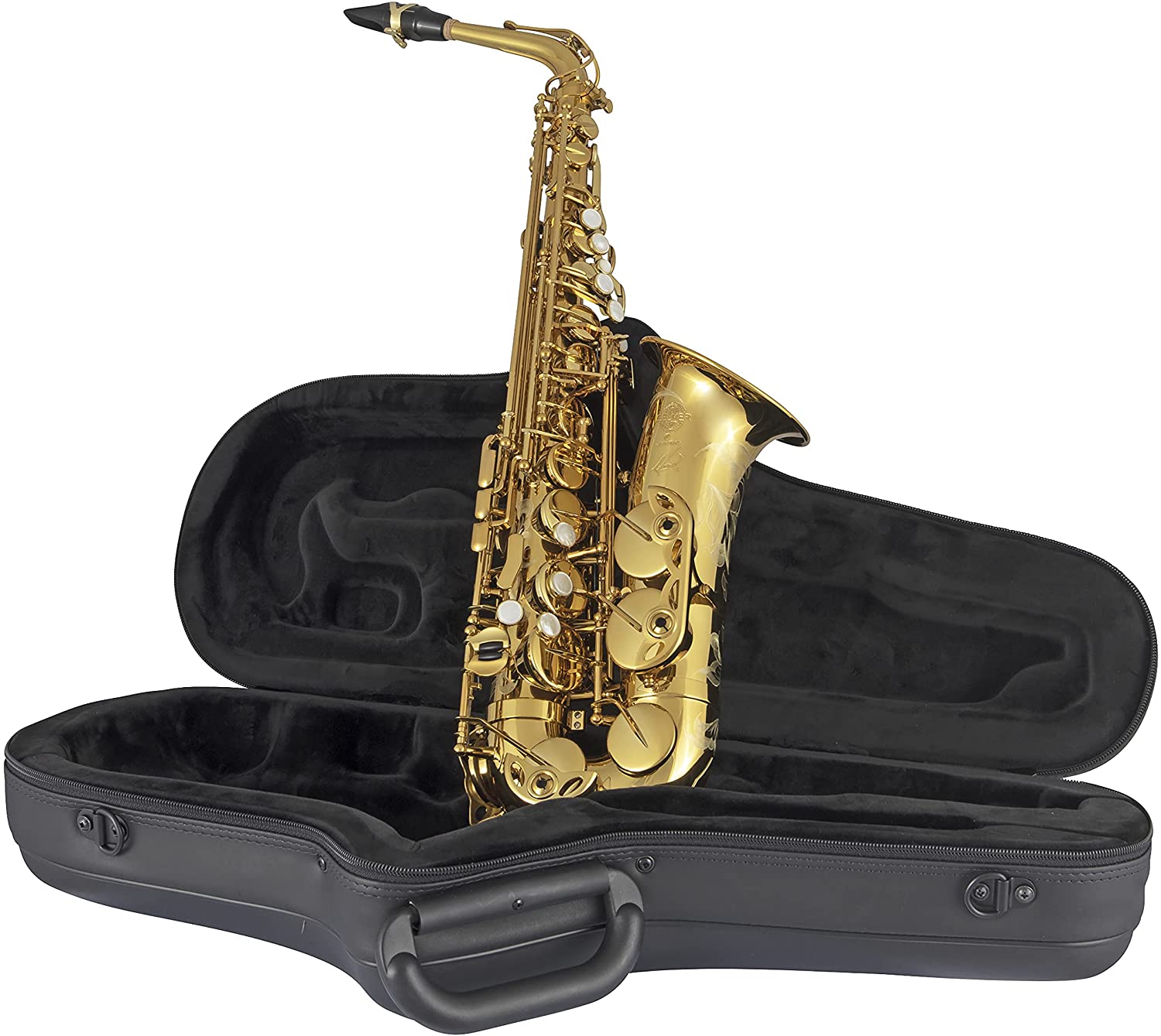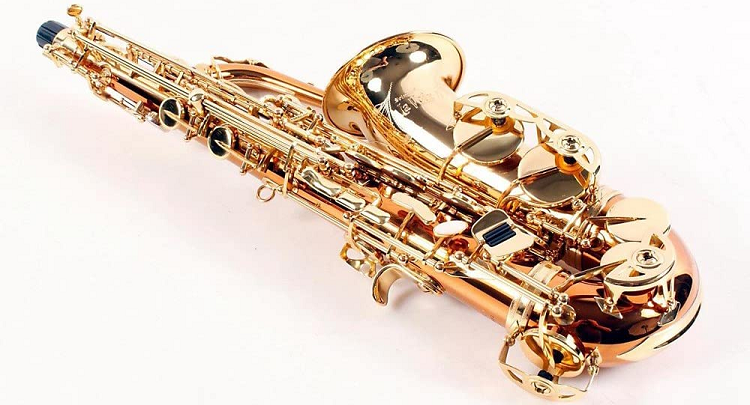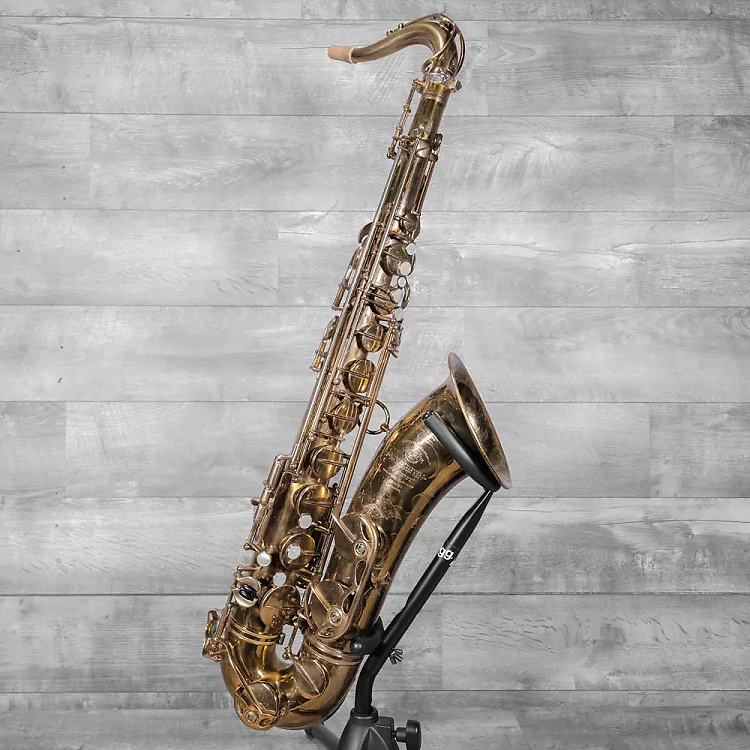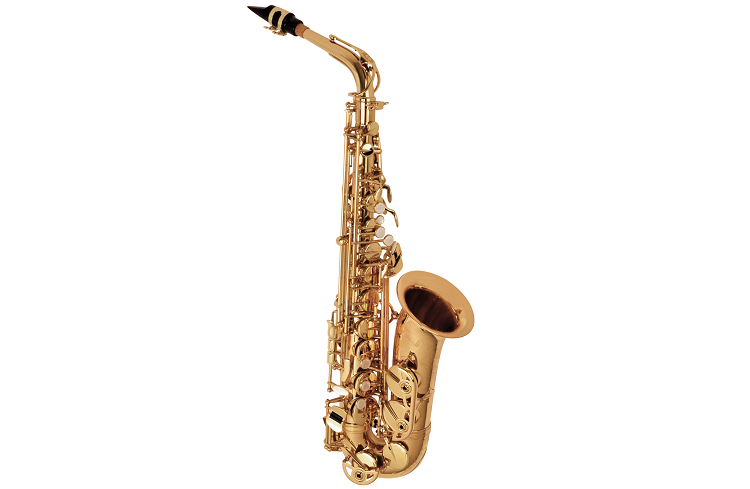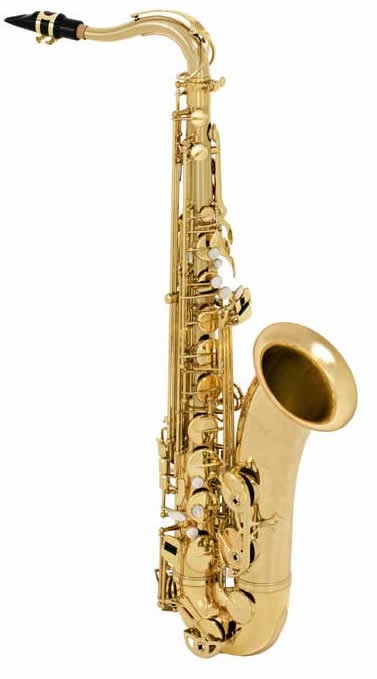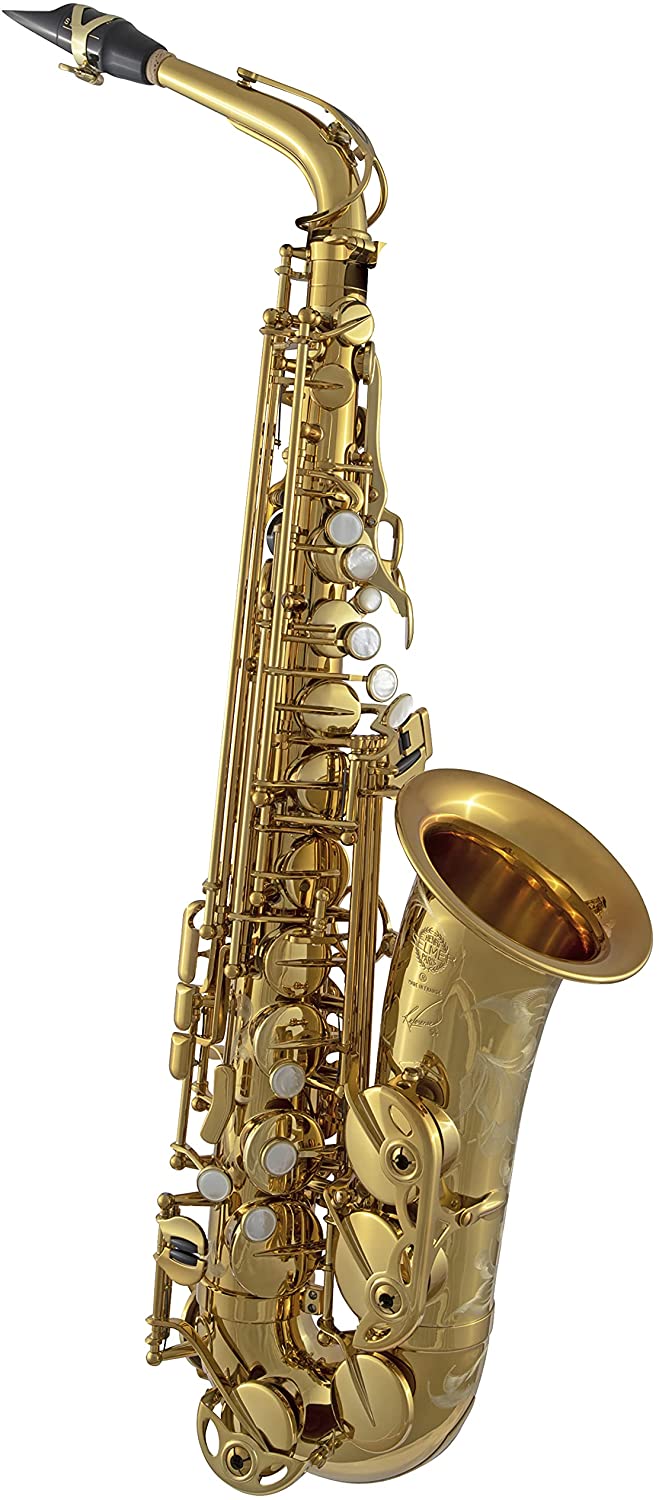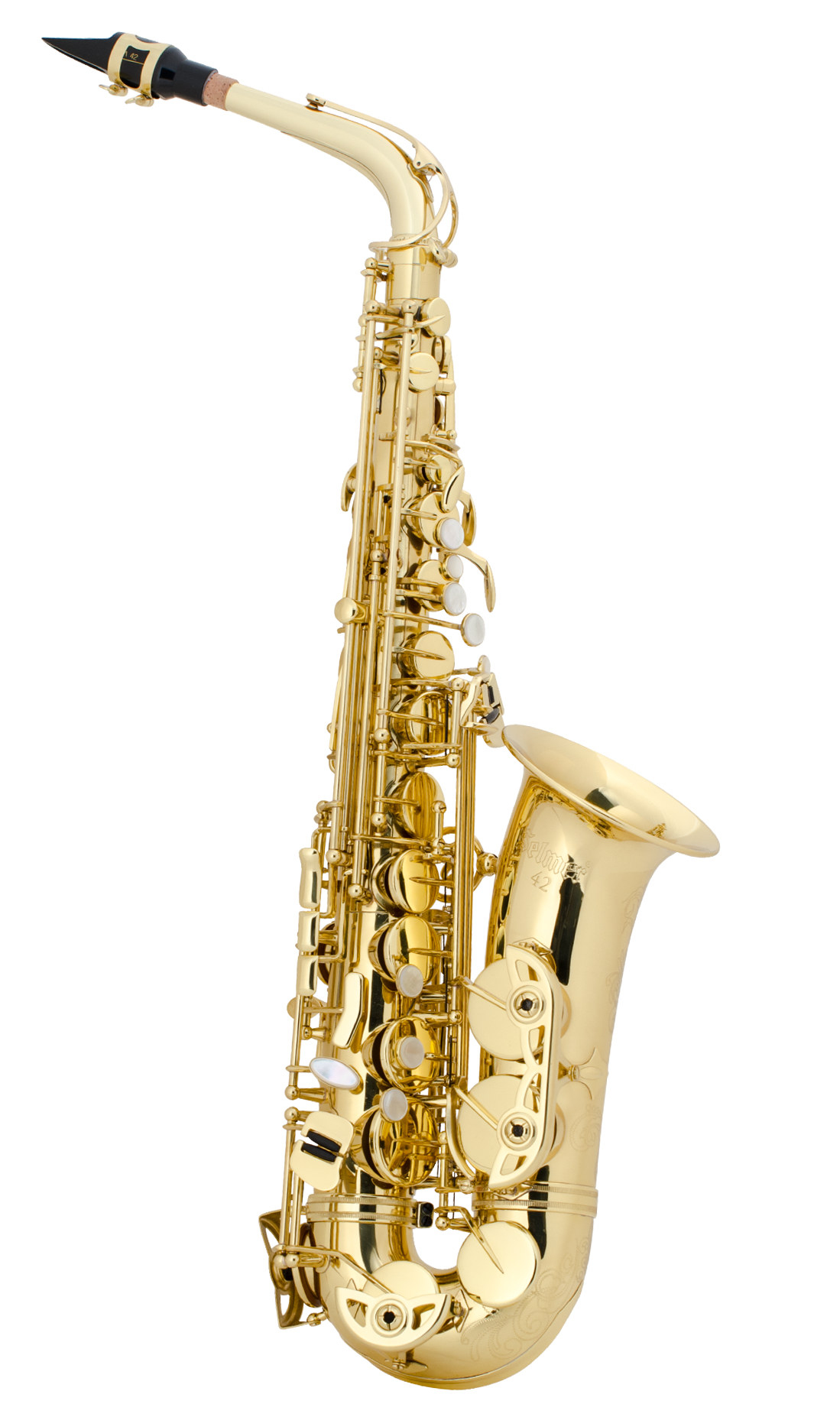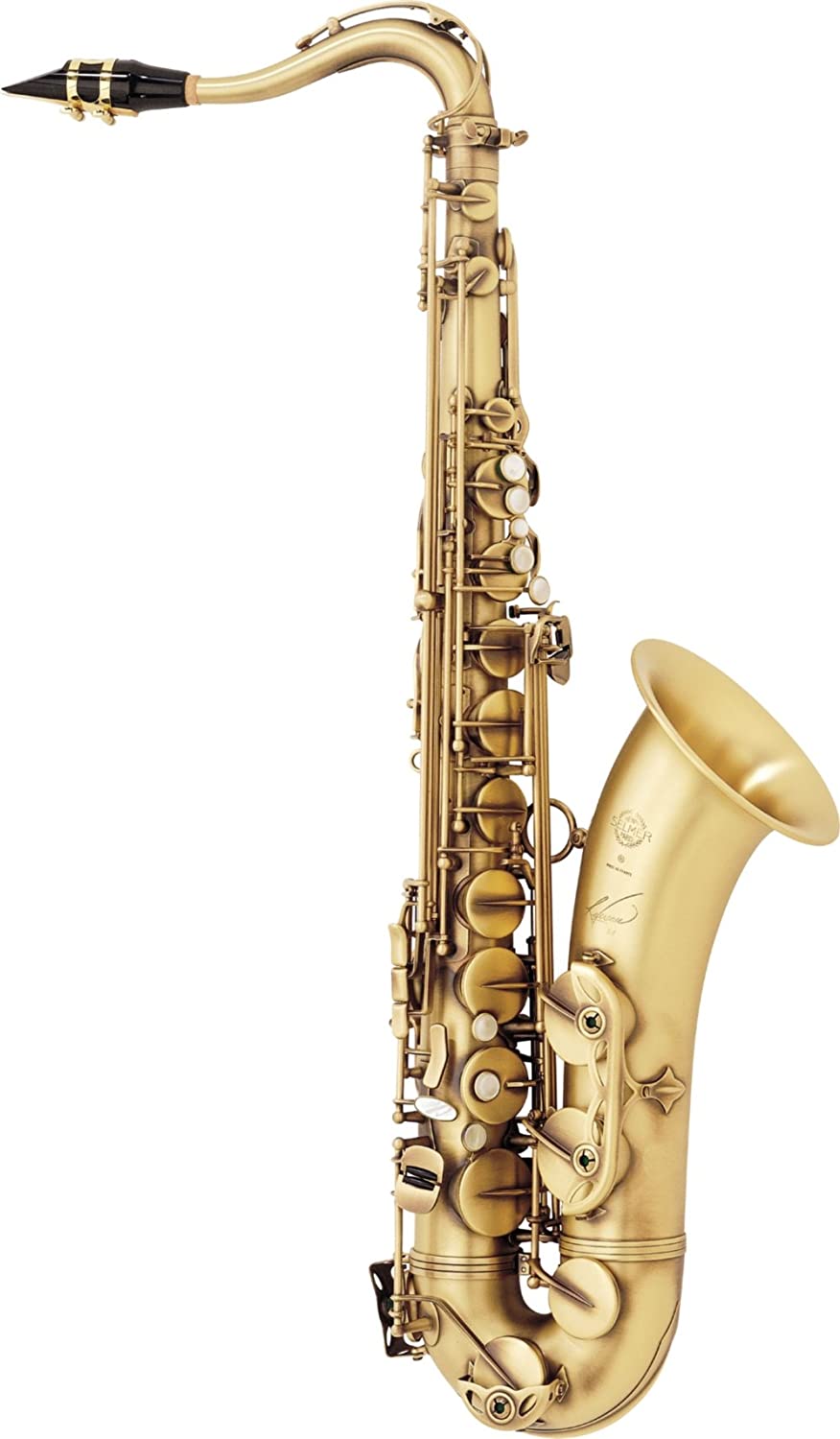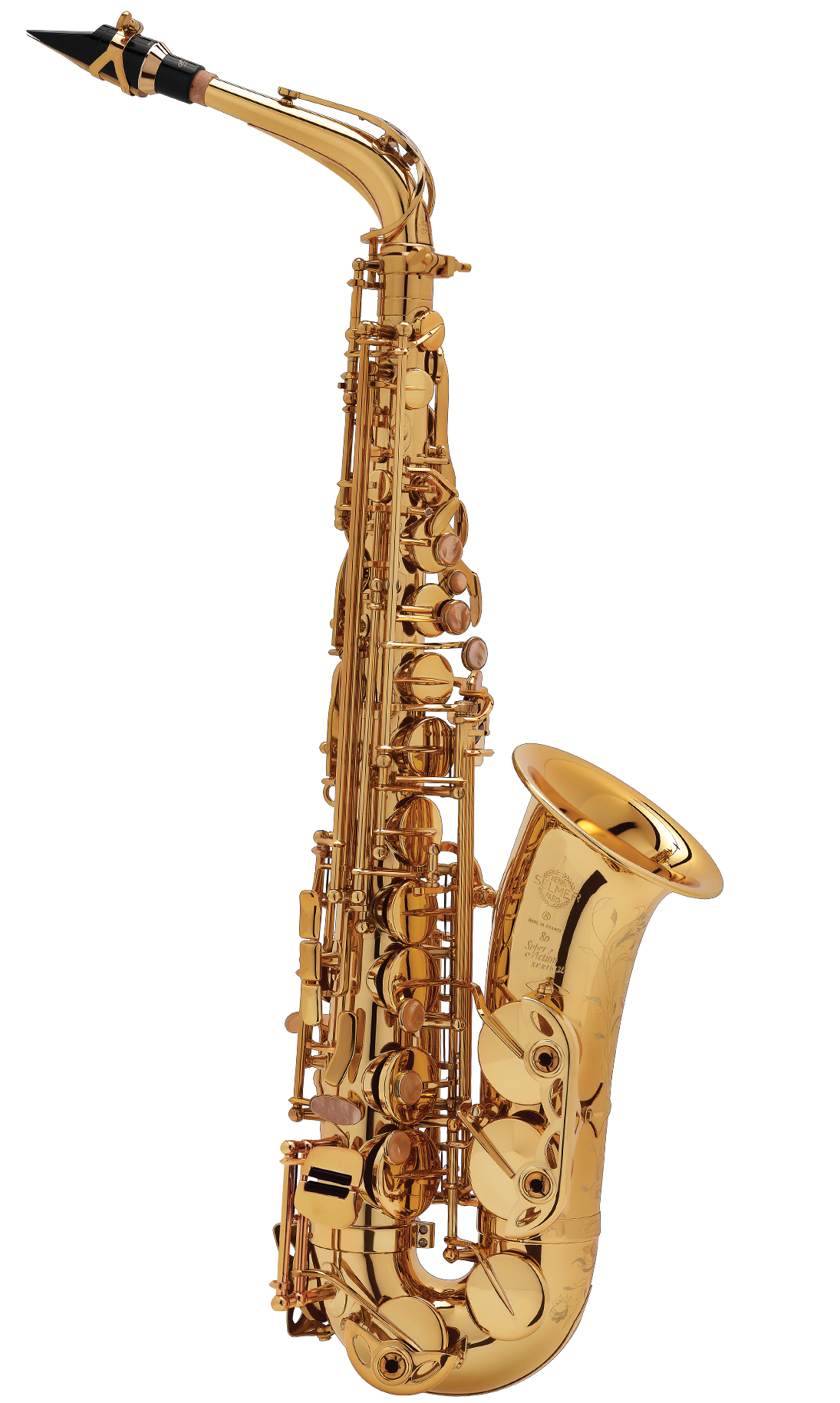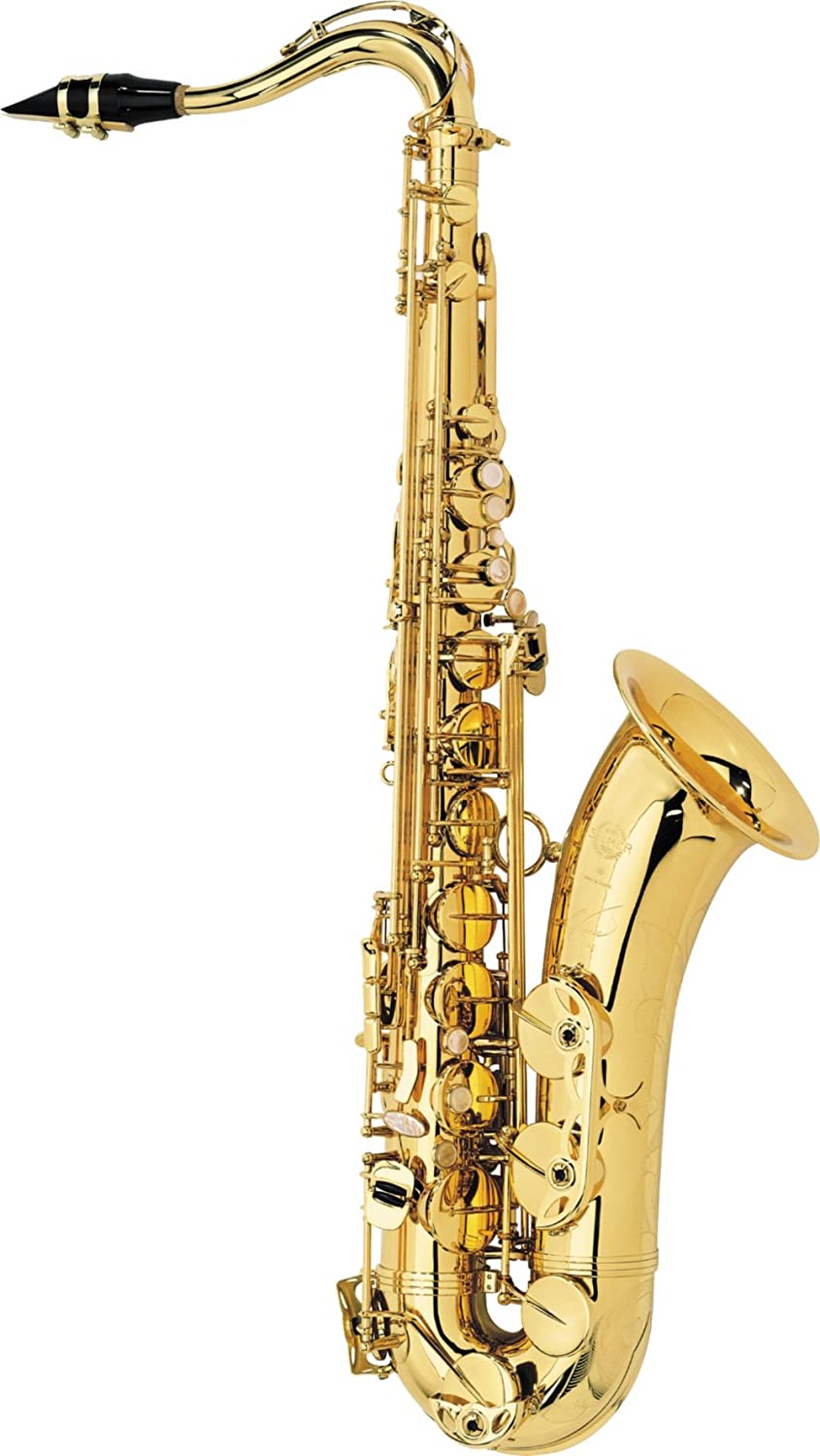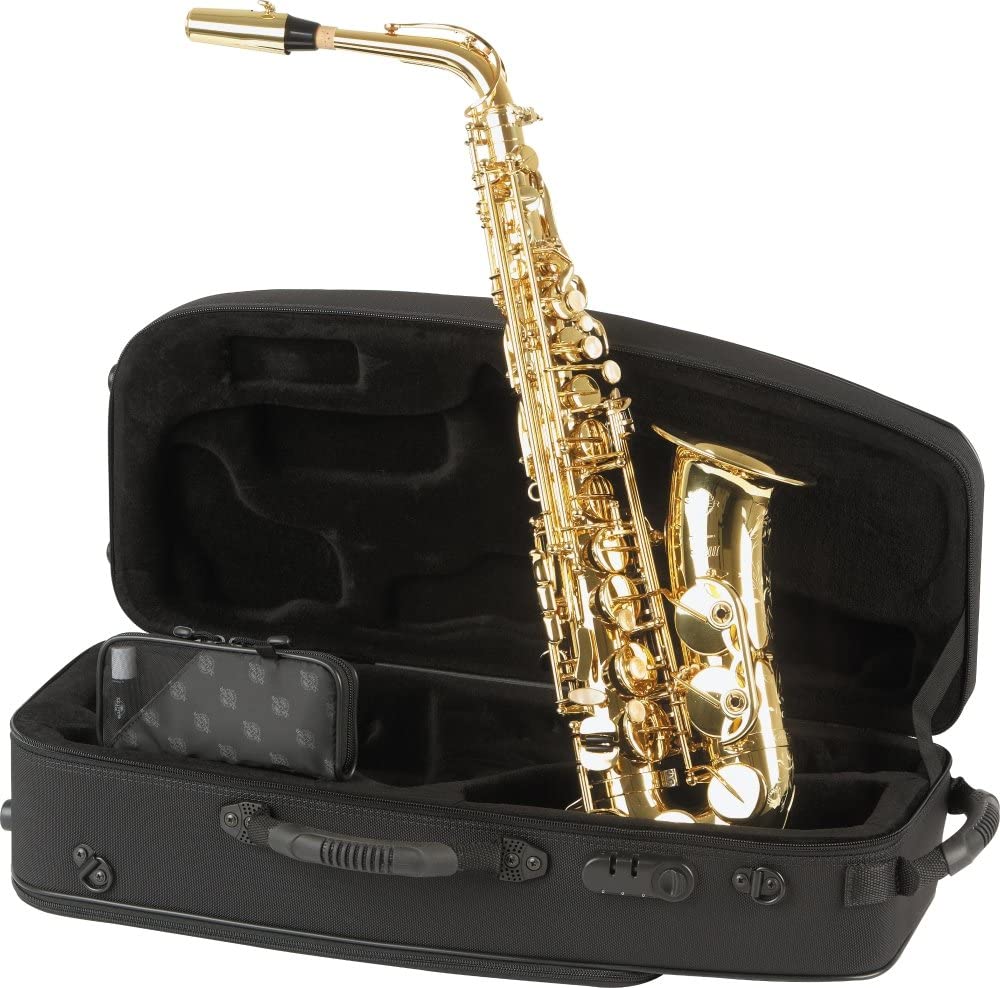- Guide to the Best Saxophone Reeds - April 18, 2022
- Best Selmer Saxophones Brand Guide - April 6, 2022
- Cecilio CCO 400 Review and Guide – Key Information On this Instrument - February 21, 2022
In 4th grade, high school students and one of the music instructors visited us in our assembly room to introduce us to the variety of instruments that we could choose from to play in the school band the next year.
Each instrument had a short introduction by the instructor followed by a short piece played by the student. As would be expected, every child wanted to play the drums as visions of sugar plum rockers filled our little heads.
The fingers of children, who were overcome by a primeval urge to ‘make sound by smash,’ began to furl and unfurl greedily. Lips were licked, the edges of chairs gripped, pupils dilated…I don’t remember who charged first, but a wall of children followed. The drummer and instructor beat us back with drumsticks and mallets.
The trombonist assisted, using their slide as a boomerang of sorts, shifting from 1st to 7th and back again. The assembly room was a cacophony of yells, percussion, and sobs. Kenny fell in the initial charge….he would never get back up…the horror…Anyways! 🙂
When I was in high school, I repaid the favor and visited those students with my Yamaha saxophone. My time came to shine and I played a piece on my saxophone to show the children the wonder of the saxophone…except I flubbed it.
The ghost of Kenny moaned in secondhand embarrassment. I knew that day that the Yamaha had failed me and vowed to redeem myself through a Selmer.
Okay, so a new saxophone isn’t going to fix your lack of talent, I know. But Selmer is highly regarded as the best saxophone manufacturer so here we are.
And while I have not been economically fortunate to buy ALL THE SELMER SAXOPHONES*, I have had the pleasure of annoying many a music store employee by asking to just ‘try out the Selmer XX’ and leave with promises of coming back to buy it.
Bottom Line Up Front
The Selmer Mark VI is the most revered (and, by the same token, controversial) saxophone to have, Selmer or not. It didn’t walk so today’s saxophones could run.
No, it ran so far and fast that today’s saxophones eat its dust and whine that the Mark VI must be on performance-enhancing drugs. They are no longer in production (1954-74) yet are still so revered that they scarcely sell for less than $10k and sometimes go for as much as $40k!
So, will you be buying one? I don’t want to limit you as I don’t know you and I’m not one to make assumptions (lest I make an a** of me and umptions. That’s how it goes, right?), but if I had to make a guess…
The next best Selmers are respectively SAS280 La Voix II (Alto), STS280 La Voix II (Tenor), Paris Reference 54 (Alto), AS42 (Alto), Paris Reference 54 (Tenor), and Paris 52JU (Alto). All of these saxophones have their individual attributes which many saxophonists from all styles love.
Selmer History: or how I Learned to Stop Worrying and Love the Sax Standard
Happy Centennial! Selmer released their first saxophone a century ago in 1922: the Modele22, produced with limited features because European manufacturers were like Ralph Krueger’s short (but still far too long) tenure with the Buffalo Sabres, “What if we just kept to the principles?” …okay, it wasn’t quite that drastic, but the trend still remained to produce instruments with limited features to (if I were to simplify it) not overwhelm the public with an overly-complicated instrument (simpler times, eh?).
Perhaps it is fate that Selmer came to be the brand of saxophone considering that in 1929 Selmer purchased the workshops of the saxophone inventor himself, Adolphe Sax. They followed up with the Modele 26 (1926) and the Selmer Super Sax (1931). Fellow competitors: Buescher, Buffet, C. G. Conn, H. N. White, Martin pushed Selmer to up their game.
They succeeded, establishing themselves as a leader with the Balanced Action (1935) which moved the low B and B♭ bell keys to the right side of the bell. It also innovated a superior left-hand pinky table, respective to its competitors.
They continued on with these innovations in their next series. Improvements in tone, intonation, etc. aside, Selmer scored points with repair-people on the Super Action. They manufactured a removable brace ring connecting the body to the bell…and there was much rejoicing.
Also notable, was the offsetting of the upper and lower key stacks. While players would need to adjust to the keys’ new position, this innovation ultimately made for a more efficient saxophone from the players’ perspective.
The next saxophone was the gift from the heavens manufacturer’s workshop: the Mark VI. The Mark VI seemed to improve everything from the simple playability to the blued steel spring needle (giving an instrument’s keys a “snappier” response).
This horn was played by practically all legendary jazz saxophonists from John Coltrane to Sonny Rollins. It enjoyed a solid two-decade long production and an even longer reign as the best saxophone in history.
Selmer never rested on its laurels and, to this day, they continue to create saxophones that both build off and pay tribute to their past catalogue. Selmer has a history of leading and innovation in saxophone manufacturing which has led them to be the best saxophone brand on the market.
How did You Arrive at Your Ratings?
I scoured the internet and publications to compile a number of (well-written) ‘Best of’ lists, Selmer-exclusive and non. For the latter, I removed any non-Selmer saxophones from the list. I also removed any student/beginner models from the scoring. You came to this article to discover the best overall, sans a ‘student’ qualifier.
I then assigned the #1 pick a score of 10 and subsequently decreased the score by 1 for each place in the rankings. As many of these saxophones appeared in multiple lists, the greatest overall score is determined to be the best. (If a student model occupied a spot, the score that that model would have received was granted to the next saxophone on the list)
And then when I had the final scores, I cheated a bit and adjusted the rankings slightly considering:
1) where these saxophones appeared in rankings. If a saxophone scored a high score via the top of two lists, that may be considered a better saxophone than a saxophone that appeared at the bottom of many lists.
2) as a result of my experience with and opinion of these instruments (see previous anecdote of being that guy in a music store). For I am a golden god and the page is my domain.
The Crème de la Crème* of the Selmers
(*Which, of course, in German, means a whale’s favorite saxophone…)
Mark VI
I’m far from the first to sing the praises about the Mark VI and I most certainly won’t be the last. The Mark VI is that revered.
Now, is it possible that the Mark VI is so revered in part due to nostalgia and it being, simply, the far superior sax of its time (World War II and the resultant material shortage and depletion of the workforce had all but stuck a fork in instrument production)? Sure, but myths have some origin in fact/reality.
Now, keep in mind that the Mark VI has also not been in production since 1975. Any individual Mark VI saxophone is at least (almost) 50 years old and has anywhere from 50 years of highway mileage to 50 years of neglect to 50 years of consistent upkeep. The quality of each individual Mark VI will differ and not all of them will sound like the best saxophone. This is inescapable.
But the Mark VIs that have been taken care of or been lucky enough to escape damage sound fantastic. Its tone is lyrical, clear, and resonating. The saxophone is versatile: playing equally well on sweet, plodding phrases as it does when it tries to pack a punch. (The Mark VI was made as both a tenor and alto, showcased here, respectively.)
Pros
- Great tone. Clear, powerful, song-like
- Consistent across all ranges
- Versatile. Whether you’re playing a kick-in-the-face jazz solo or providing support for a vocalist, the sax’s tone can match your needs.
- Prestige. I would not recommend this be the sole reason you shell out $10k+ for a Mark VI, but..is it cool to play the most revered saxophone ever? Certainly. Who doesn’t like to feel cool every once in a while?
Cons
- Price: Unless you’re very well off, connected, and/or lucky, you’ll be lucky to just demo one of these saxes. They are ridiculously expensive.
- Prestige: This goes both ways. On the one hand, it’s great to have an instrument that is so revered. On the other hand, this can blind you to the reality that the specific Mark VI you have access to/the chance to purchase just doesn’t match up to its reputation.
SAS280 La Voix II Alto Saxophone
This saxophone is, by far, the favorite of 2021/2022, enjoying a ranking (assuming that saxophones themselves can feel joy, of course) in many publications’ list and topping out in a few of them.
The SAS280 La Voix II has wonderful playability. The key placements are perfectly placed for fantastically fluid playing, perfect for speedy runs in classical music or rapid soloing in jazz.
The traditional bell size of the La Voix II enables you to blend your tone when playing live. Yet, with a brighter tone, this instrument is versatile enough to clear the way for soloing and set itself out in front.
Pros
- Available in a variety of finishes: Black, Clear, Copper, and Silver lacquer*
- distinct bright sound
- Possesses a number of advanced features including a high F# key, multiple adjusting screws, rocking table mechanism, treated leather pads with metal resonators, a ribbed construction, and is hand engraved
- Blue steel springs for a responsive instrument, giving the sax’s pitches a snappy feel.
- Affordable (compared to other professional saxophones)
- Mouthpiece included
Cons
- Distinct bright sound: the characteristic tone of the La Voix II may not be best suited for your specific needs
- The different lacquers give each saxophone a slightly different tone. This isn’t a con, per se, but it’s important to understand that the tone is not ubiquitous when factoring which saxophone to buy
* lacquer – “a type of hard and potentially shiny coating or finish applied to materials such as wood or metal“
STS280 La Voix II Tenor Saxophone
The La Voix II continues its dominance here with the STS280 taking the number 3 position. This saxophone also boasts efficient and ergonomic playability with improved key placement from previous models. These saxophones are more efficiently engineered so as to be a little lighter. In a performance, sometimes every little bit of energy matters.
The Selmer LaVoix II is responsive across its entire range. The neck is engineered with slight resistance. The neck is a very important part of the saxophone as everything else on a saxophone can, more or less, be tinkered with/replaced/repaired. Unlike the SAS280, the STS280 does not come with a high F# key.
The STS280 has a full, rich tone aided by the traditional bell size
Pros
- Available in a variety of finishes: Black, Clear, Copper, and Silver lacquer
- A number of advanced features include a traditional bell flare, mini-rib construction, multiple adjusting screws, blue steel springs, treated leather pads, and hand-engraving
- Affordable (compared to other professional saxophones)
- Mouthpiece included
Cons
- No high F# key
- The different lacquers give each saxophone a slightly different tone.
Selmer Paris Reference 54 Alto saxophone (Standard)
As the name suggests, the Reference 54 Alto draws inspiration from their 1954 Mark VI, integrating a lot of its acoustic temperaments. This endows the saxophone with a more vintage sound/playability while still respecting the advancements in saxophone design made over the past 7 decades. This may be my subjective favorite of all these saxophones.
The Paris Reference 54’s tone is rich and dark with great resonance across the instrument’s range aided by the (dark gold) lacquered finish. It has a longer bell to improve intonation which also gives it a more ‘shouty’ tone.
Personally, I like my saxophone playing to be a bit gritty. Much like the other saxophones here (because it’s what helps make a Selmer, a Selmer), the keywork is fluid and responsive.
Pros
- Draws inspiration from the best
- Dark, rich tone
- A number of advanced features include a longer bell flare, rib construction, multiple adjusting screws, blue steel springs, treated leather pads with plastic resonators, and a hand-engraved bell
- High F# key
Cons
- The longer bell may interfere with the saxophone’s ability to fit into a case.
- Longer bell may make it difficult to blend this saxophone’s tone
5. AS42/SAS711 Alto Saxophone
The AS42 is the first collaboration between Henri Selmer Paris and Selmer USA. The meeting of the minds from an ocean apart paid off. The AS42 is a professional saxophone that is highly responsive and versatile. The neck and mouthpiece (AM42) were constructed exclusively by Henri Selmer Paris, the only saxophone to hold that distinction.
The instrument has a clear lacquer finish and (unsurprisingly!) has a superb keywork for comfortable and ergonomic playing. The saxophone is equipped with blue steel springs giving the horn a quick response. The saxophone has a strong tone and clear projection across the entire range thanks to its fully ribbed construction and metal resonators,
Pros
- Strong tone across all registers
- A number of advanced features include a fully ribbed construction, drawn tone holes, treated leather pads, metal resonators, blue steel springs, adjustable metal thumbrest, and an engraved bell
- High F# key
Cons
- The instrument weighs just over 15 lbs which can add up over the course of a long practice session/performance
- The different lacquers give each saxophone a slightly different tone.
Paris Reference 54 Tenor Saxophone
Much like its alto counterpart, the Paris Reference 54 Tenor was inspired by the design of the 1954 Mark VI while incorporating the 7 decades of saxophone engineering that has followed.
The metal alloy for this saxophone is created through a hammering process that allows for a higher percentage of copper than usual. The composition gives the Paris Reference 54 a lively tone with a strong core.
This is all complemented by, arguably, the best intonation of the Paris Reference models. And, again, the keywork for this model is fantastic and allows for very fluid playing.
Pros
- Strong tone across all registers
- Hammering process creates a very distinct tone
- Similarly advanced features to other models
- High F# key
Cons
- Among the most expensive of these saxophones
- No engraving (which isn’t a dealbreaker for me. I’d play a rusty horn with graffiti on it if it sounded great)
Selmer Paris 52JU
The Paris 52 Jubilee Edition saxophone is Selmer’s most popular model in its history. Much like the Paris Reference 54s are inspired by the design of the Mark VI, the 52JU is inspired by their popular Paris Super Action Series II and III, saxophones which were the standard in their time.
The Gold Lacquer finish adds warmth to this horn’s tone and doesn’t hurt the aesthetics either which is also where this horn excels. An innovative engraving technique allows for a thinner and more accurate engraving. The bell-to-bow ring is also adorned with an engraving of founder Henri Selmer’s original signature.
The Paris 52JU is (physically) lighter and more responsive for a more fluid playing experience. The octave key has been redesigned with a lighter mechanism for a snappier response. The ribbed brass body along with the gold lacquer focuses the tone and gives the tone a stronger core.
Pros
- Draws inspiration from the best
- Warm tone with a strong center
- A number of advanced features include tapered pivot screws, blued steel springs, and treated leather pads with metal resonators.
- High F# key
Cons
- Price. Among the most expensive
- Price may be influenced by the use of the innovative engraving technique. (Which may not be a dealbreaker for you. See my previous thoughts on aesthetics)
Honorable Mentions
Selmers are an industry-standard so it seems a shame to cut the list so short.
1. Selmer Paris Reference 36 Tenor Saxophone
Drawing inspiration from the acoustics and keywork of the Balanced Action of 1936, the Reference 36 is a dynamic saxophone that has a full, resonant tone throughout its entire range. Like, the Paris Reference 54, this horn has fantastic intonation.
2. Model 62 Jubilee Edition Alto Saxophone
The Jubilee Edition saxophones came to replace the Super Action 80 Series II and III saxophones, which were some of the most popular saxophones of their generation. The Jubilee Series underwent redesigns of previous models to end up with saxophones that are (physically) lighter and more responsive.
The Model 62 is a favorite among saxophone players for classical music. The Jubilee series improved upon the flexible tone of their predecessors while unlocking a higher level of playability.
Decision-making tips
First off, consider your budget. As sad as that may be, your bank account may already make the decision of which saxophone you will purchase (or, not purchase).
The best Mark VIs are impossibly expensive unless you’re super-wealthy/the world’s greatest budgeter. The Reference 54 and 52JU are generally the most expensive.
Maybe a used saxophone is the right purchase for you too! The uglier looking the saxophone, the more possibility that the saxophone is a “player” (the type of saxophone that is worth repairing over time rather than selling)
Next, consider your goals with music. Are you a classical musician? Perhaps the Model 62 Jubilee edition is a great fit. Are you more jazz-oriented? Are you looking to step away from the crowd?
Perhaps the 52JU or Model 62 are not the horns for you then. Consider also that the mouthpiece, ligature, reeds, and different lacquer can also alter your tone significantly.
FAQs
’cause errybody wanna be knowing about the Selmers
Question: Is Selmer a Good Saxophone Brand?
Answer: Selmers have been an industry standard for a long while and a leader and innovator even longer than that. They have outlasted/bought out most of their competitors and survived a world war over their century of instrument production.
Question: Where are Selmer Saxophones Made?
Answer: The Henri Selmer Paris factory is located in France, Mantes-la-Ville, to be specific. They have been produced in the same factory as every other one of their models, going back to the Modele22. The USA Conn-Selmer Brass Factory is located in Elkhart, Indiana (Conn-Selmer acts as the French factory’s North American distributor)
Question: Who Plays Selmer Saxophones?
Answer: Selmer Saxophones have been the preferred horn by many famous musicians including, but not limited to: John Coltrane, Sonny Rollins, Wayne Shorter, Paul Desmond, Stanley Turrentine, Jean Toussaint, Chico Freeman, Kamasi Washington, Claude Delangle, and Johnny Griffin
Conclusion
The Mark VI is, arguably the most legendary saxophone ever, but if you can’t land yourself a Mark VI, it is rare that Selmer ever produces a bad saxophone that’s not worthy of a financial, emotional, and time investment.
They have been a leader in instrument production since their inception a century ago. Happy playing! I know I will be!
Looking for more interesting readings? Check out:


